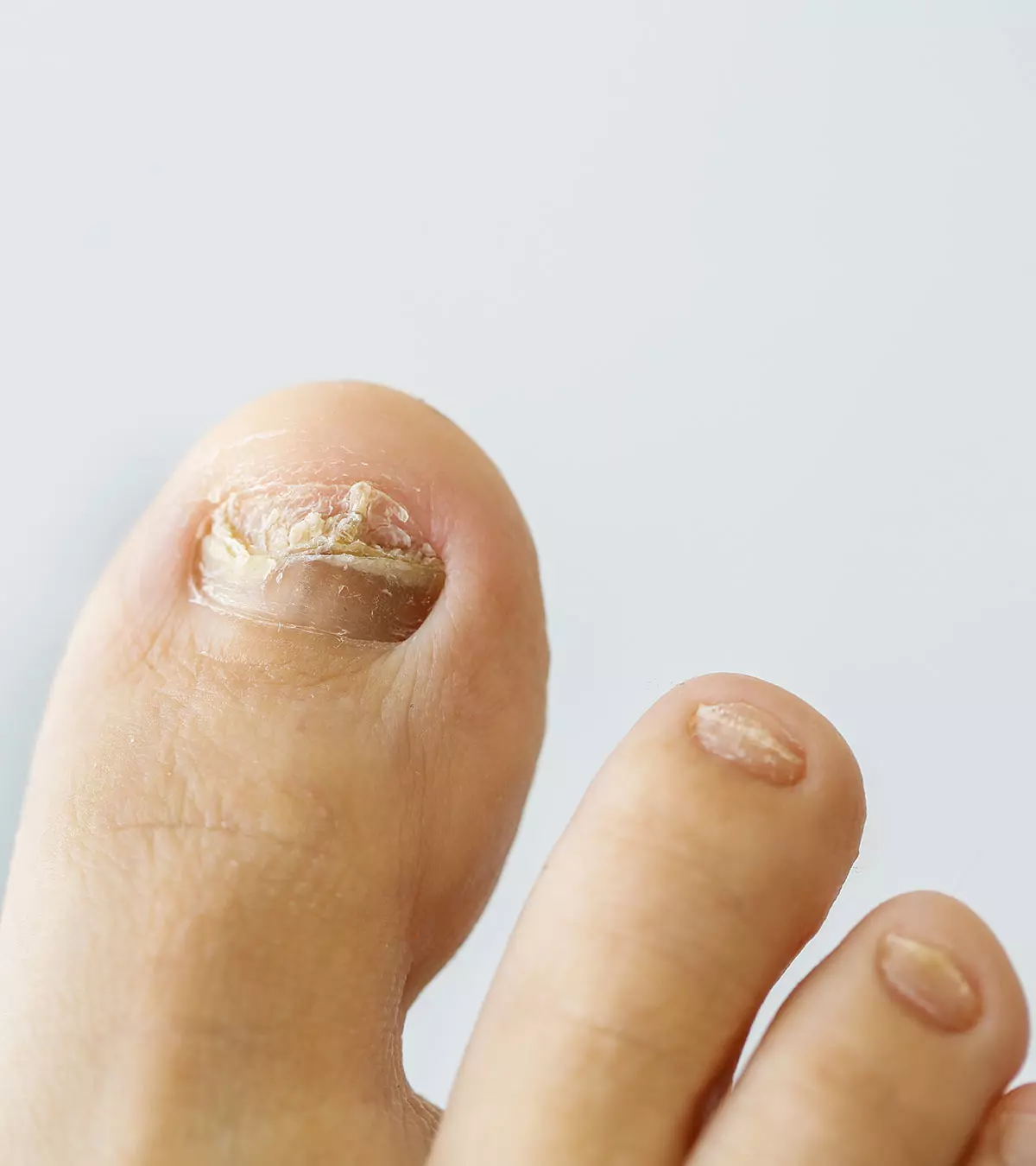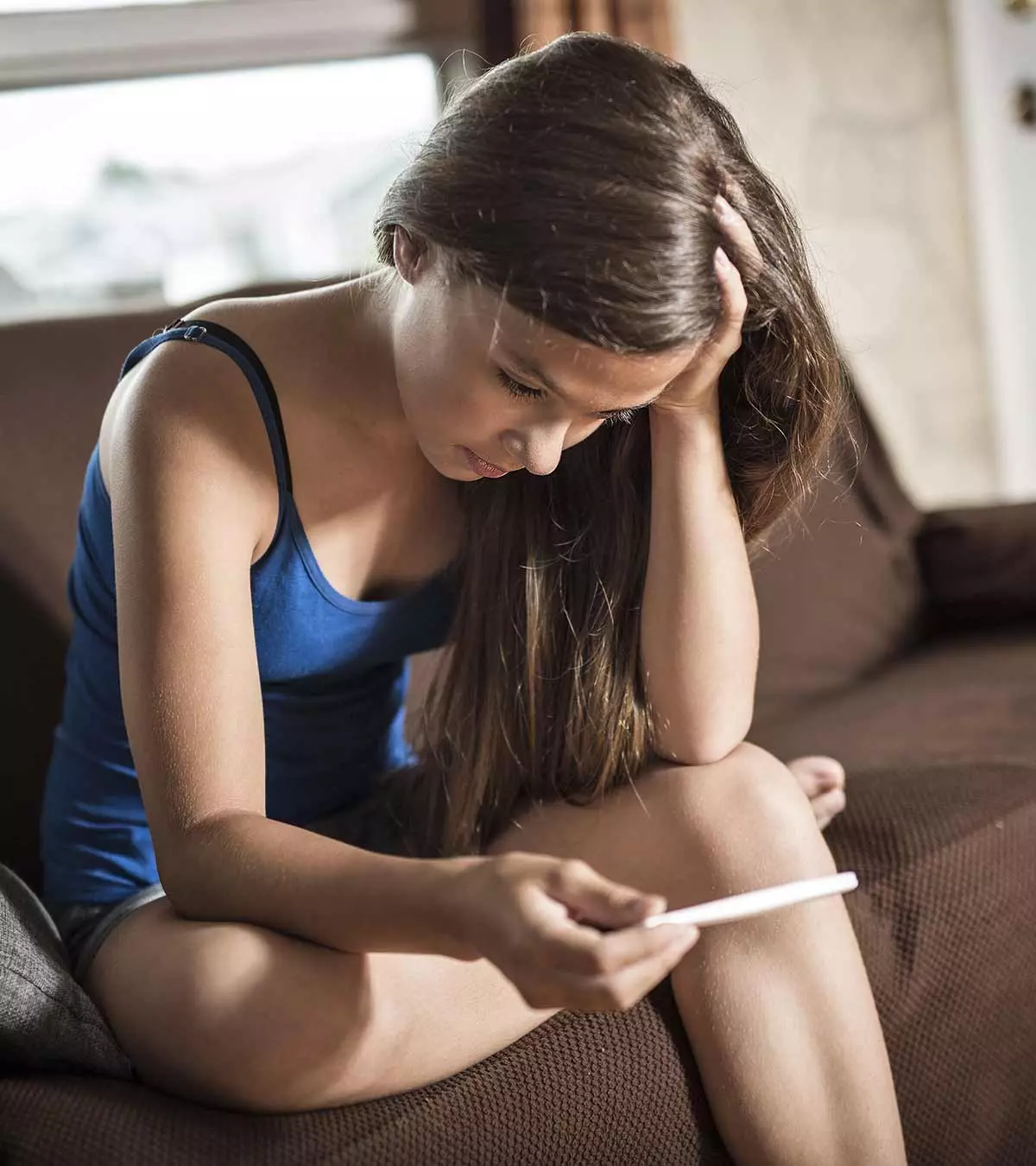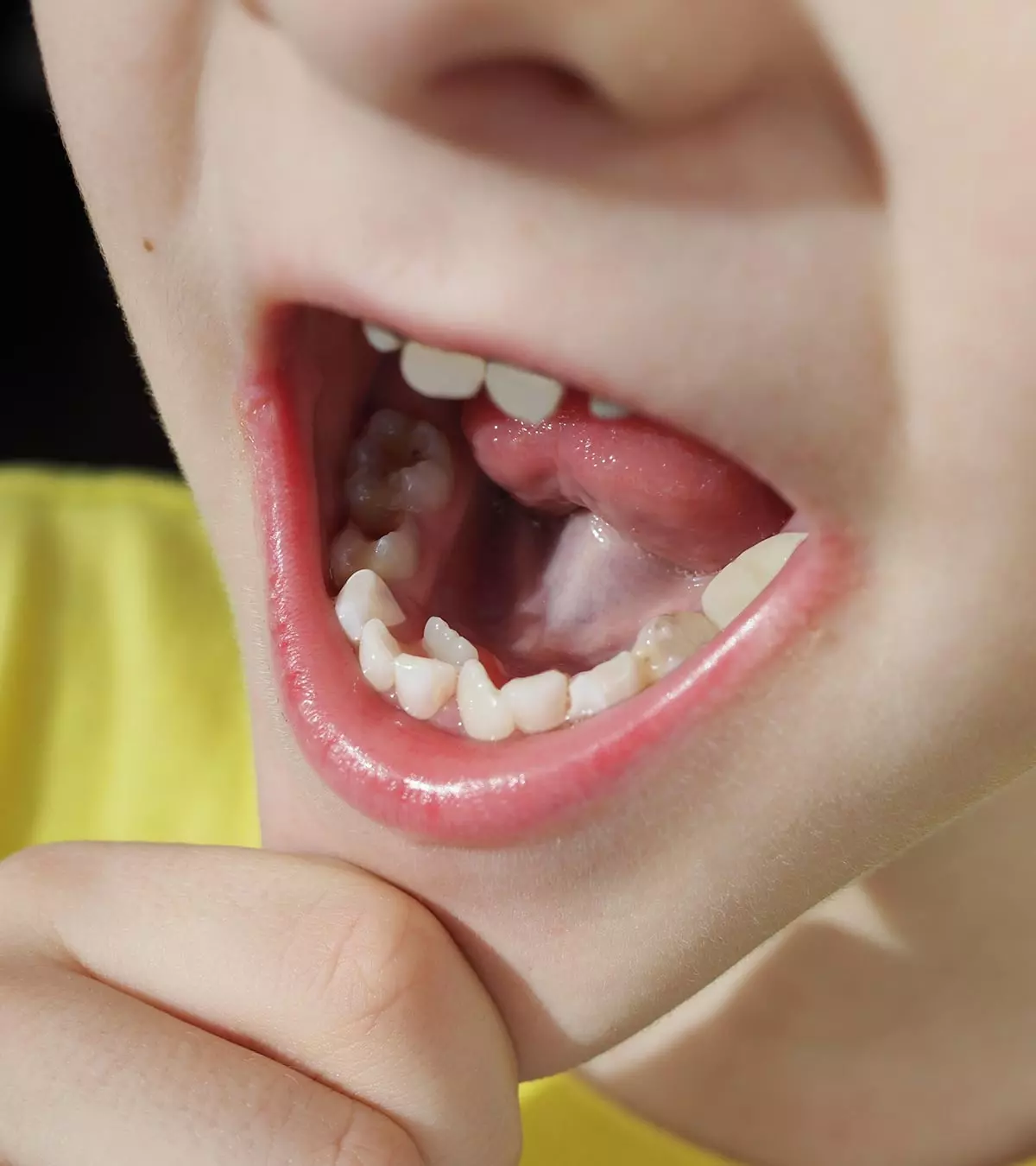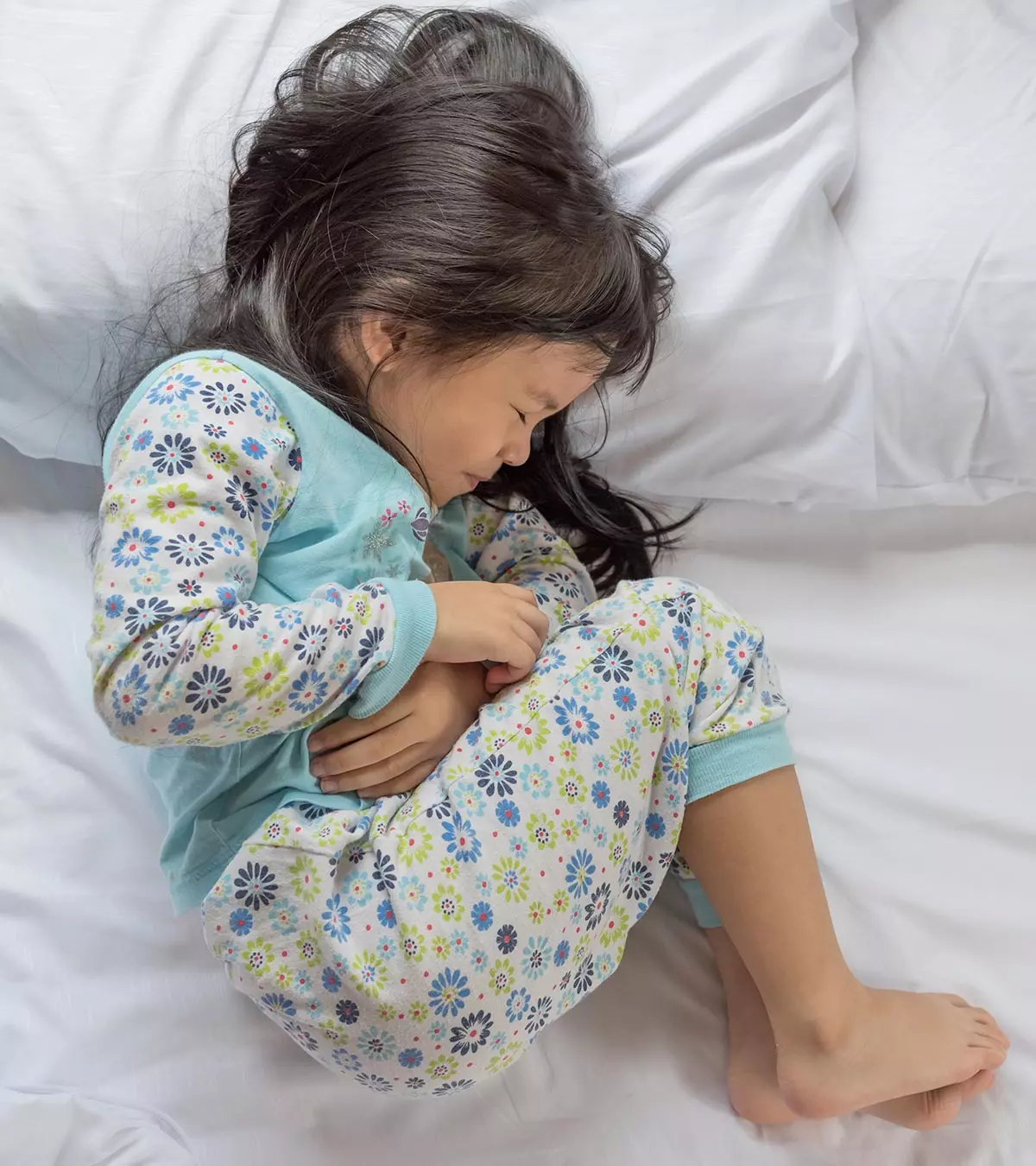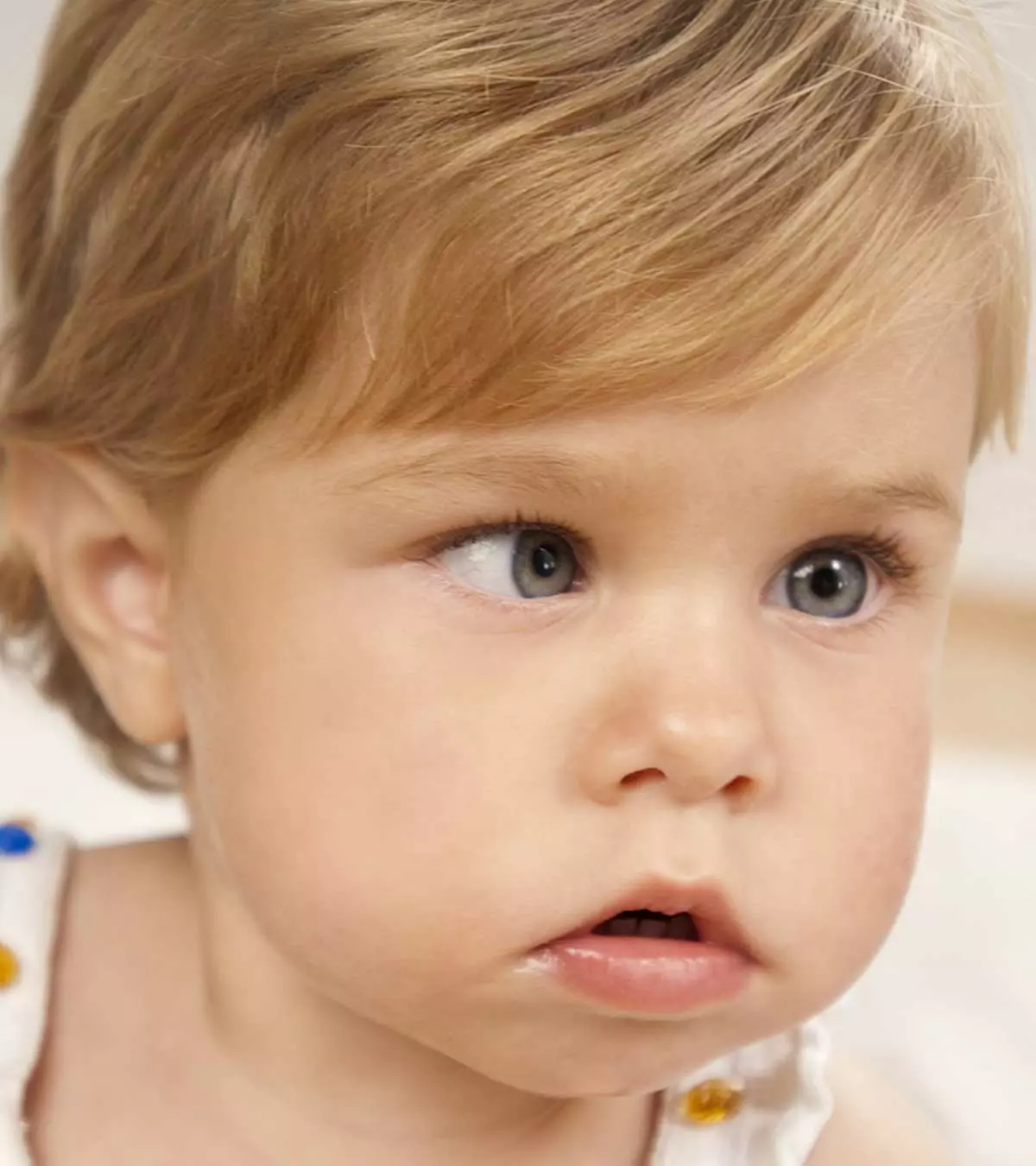
Image: iStock

Lazy eye is an eye disorder that arises when one eye becomes weaker than the other. Lazy eye (amblyopia) in children may result in decreased vision in the weaker eye (1). This condition affects around 3% of children and is the most common reason for vision loss (2). However, early detection and appropriate treatment could help prevent long-term complications such as vision impairment in children.
Read this post to learn more about the lazy eye in children, including its signs and symptoms, diagnosis, treatment options, and management.
Key Pointers
- Amblyopia occurs when the brain is unable to recognize vision from one eye and starts depending on the stronger eye.
- Early diagnosis can help fix this condition. Strabismus and refractive errors cause lazy eyes in kids, while premature birth and weighing lower than average at birth increase the risk of amblyopia.
- Glasses, eye drops, and surgery are some of the treatments suggested for this disorder.
- Taking care of eyes and doing activities that strengthen the eyes will help improve your child’s vision.
What Happens In Amblyopia In Children?
Amblyopia occurs when there is a malfunction in the eye-brain connection. The brain is unable to recognize vision from one eye. Eventually, the brain begins to ignore the eye with the blurred vision and relies more on the ‘stronger’ eye, worsening the vision in the weaker eye (1) (2).
In some children, amblyopia is not easily noticeable. In fact, even children might be unaware that the vision of one of their eyes is affected. Therefore, it becomes critical to have regular and early eye exams in children.
Types Of Amblyopia In Children
Amblyopia manifests in various types with distinct causes and characteristics (3):
- Refractive amblyopia, the most prevalent form, stems from uncorrected refractive errors. There are two types of refractive amblyopia:
- Anisometropic amblyopia, a form of refractive amblyopia, arises when each eye has a distinct refractive error
- Isoametropic amblyopia, another subtype of refractive amblyopia, affects both eyes with a similar significant error.
- Strabismic amblyopia results from the suppression of the deviating eye, and constant strabismus exacerbates the condition.
- Deprivation amblyopia, the least common but severe type, occurs when the visual axis is obstructed, often due to conditions like eyelid ptosis or cataracts.
- Reverse amblyopia emerges when the sound eye is penalized during treatment of the original amblyopic eye. Beyond impacting visual acuity, amblyopia influences binocularity, contrast sensitivity, and fixation patterns.
Symptoms Of Lazy Eye In Children
The symptoms of lazy eye could be hardly noticeable in children. Children with amblyopia usually display the following signs and symptoms of the condition (1) (2).
- Poor depth perception
- Difficulty in telling if the object is far or near
- Bumping into things, particularly on one side
- Having a difference in nearsightedness or farsightedness between the two eyes
- Favoring one side of the body
- Having crossed eyes
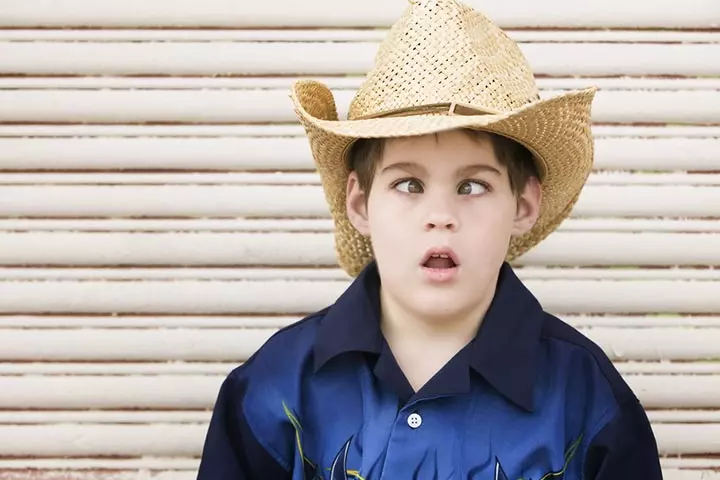
- Having a droopy eyelid
- Shutting one eye often
- Squinting
- Tilting the head to one side
Can Lazy Eye Be Fixed In Children?
Yes, early diagnosis can increase the chances of a full recovery. It usually takes several weeks to months to improve the vision of the ‘lazy’ or weaker eye (4).
Causes Of Lazy Eye In Children
In most cases, doctors may not know the cause of lazy eye. However, amblyopia usually occurs when there is a difference in the focusing ability of each eye (2). Some of the eye problems that may cause amblyopia are the following (1) (2).
1. Refractive errors
These conditions affect how light passes through the eyes and include:
- Nearsightedness (trouble seeing distant objects; also known as myopia)
- Farsightedness (trouble seeing nearer objects, also known as hyperopia)
- Astigmatism (blurry vision due to curved cornea)
2. Strabismus (‘Cross-eyed’)
The eyes usually move together. However, in this condition, an imbalance in the lengths of the eye muscles causes misalignment in the eyes’ position. It could cause one eye to drift in, out, up, or down. Strabismus in infants and kids, also called crossed eyes, may cause the brain to rely on one eye more than the other, resulting in amblyopia.
3. Structural problems (Deprevation al amblyopia)
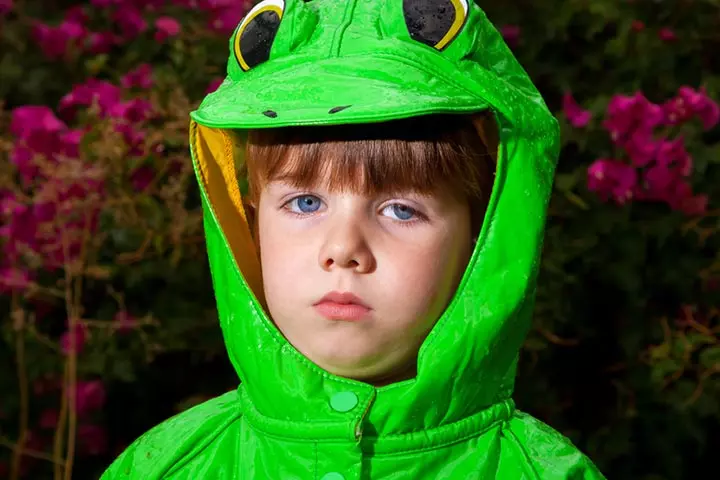
Structural issues could lead to amblyopia. These include:
- Cataracts (blurry vision due to cloudiness in the lens)
- Droopy eyelid
- A scar on the cornea
- Eye injury or surgery
Risk And Complications Of Lazy Eye
Some children are born with the condition, while others develop it during childhood. There is an increased risk of developing amblyopia in children who (1) (2):
- Are born prematurely.
- Weighed smaller than average at birth.
- Have developmental disabilities.
- Have a family history of other eye conditions, amblyopia, or childhood cataracts.
If untreated, the condition can result in long-term vision problems, including vision loss in the affected eye. According to a meta-analysis by researchers from The People’s Hospital of Leshan, the global prevalence of amblyopia in children is around 1.36%.
When To See A Doctor?
Consult an ophthalmologist if you notice any of the symptoms of amblyopia in your child. When planning a visit, make a list of the following points.
- Symptoms, even those that may seem unrelated
- Medications, vitamins, and supplements your child takes, including doses
- Medical information, including other conditions or allergies
- Family history of eye problems, such as lazy eye, cataracts, or glaucoma
- Questions you want to ask your doctor
Diagnosis Of Amblyopia In Children

The American Optometric Association recommends a thorough vision screening in children before they are six months old, and when they are three years old (5). The child’s vision should be checked at least once between the ages of three and five years. These assessments could help in the early diagnosis of the condition, enabling quick treatment to avoid lasting vision issues.
During diagnostic procedures, an ophthalmologist checks the difference in the visions of both eyes. They might cover an eye or place a patch over it to determine whether the child can follow a moving object with an eye. The optometrist may also shine a light on the eyes, administer eye drops to dilate the pupil, and ask the child to read letters on a chart (5).
They may also observe the reaction of the child with an eye patch. For instance, if the child has a problem, they will try to look above or below the patch. Younger children may try to remove it or cry (4).
These tests could help determine the underlying cause of lazy eye in children. The underlying cause could include refractive errors, strabismus, cataracts, or other eye disorders.
A mother of four children shares her experience of her son’s diagnosis with Amblyopia on her YouTube channel. She says, “I took my son in for the eye doctor appointment and they were showing him pictures instead of letters and they were covering up one of his eyes and the pictures kept getting bigger and bigger. I thought they were massive on the wall and he said he couldn’t see it and I’m like oh maybe he just doesn’t understand it so we switched eyes and he was able to see it smaller and smaller and smaller and I was blown away like I couldn’t believe that he wasn’t able to see these huge pictures and the doctor went on to explain to me that he had refractive amblyopia (i).’’
At What Age Is Lazy Eye Treated?
The treatment of lazy eye in children was earlier considered effective up to the age of seven years. However, a recent study suggests that amblyopia can be treated in children up to 17 years of age.
The study included children between the ages of seven and 17 years. The study made the following main observations.
- 53% of children between the ages of seven and 12 years showed improved vision after the treatment.
- 47% of children between the ages of 13 and 17 years gained improved eyesight after the treatment.
Treatment For Lazy Eye In Children
The treatment for amblyopia depends on the underlying cause. The correction strategy primarily relies on making the brain use the weaker eye more effectively. The following are the various treatment options for lazy eye in children (2) (5) (6) (7).
1. Eye patches

The doctor may put a stick-on eye patch on the child’s stronger eye so that the brain uses the weaker eye for vision. It gradually strengthens the vision from the weaker eye. It usually takes a few months for the weaker eye to become stronger (4). Some children may have to wear the eye patch for a few hours a day, while others may require it for the entire day. The treatment may last for a few weeks to years.
2. Glasses
These are commonly used in correcting refractive errors, such as nearsightedness and farsightedness. Glasses may also be used in the correction of lazy eye due to strabismus.
 Point to consider
Point to consider3. Eye drops
Special eye drops could blur the stronger eye’s vision, forcing the brain to use the weaker eye. This option can help treat lazy eye in young children who may peel off the eye patch when parents are not around.
4. Surgery
Surgical treatments might be considered if lazy eye is due to strabismus or cataracts. Certain eye disorders, such as some refractive errors, could be cured with surgery. The type of surgery can vary based on the underlying cause.
5. Vision exercises and therapy
These eye exercises can be used in combination with other treatment methods for strengthening the eye muscles and improving vision development. Vision therapy treatment includes:
- Spatial skills involving eye-hand coordination
- Accommodation for focusing
- Fixation (visual gaze)
- Saccades (eye jumps)
- Pursuits involving eye-tracking
- Binocular vision for making the eyes work together
 Things to know
Things to knowThese treatment options may improve the child’s vision in a few weeks to months, depending on the severity of the child’s amblyopia. Your child may have to continue with follow-up treatment to prevent the recurrence of lazy eye at a later age. Parents should keep track of their child’s progress and work with healthcare providers to make any necessary changes to the treatment plan.
What Can Parents Do?
You can take the following steps to improve your child’s vision and keep their eyes healthy.
- Eye care: Take your child for regular eye exams. Make sure not to miss follow-up visits.
- Continue with the treatment: Although your child may resist wearing eye patch or glasses, encourage them to do so with positive reinforcement. Teach them why it is important.
- Do activities to strengthen the eye: You may try doing puzzles or reading together. Parental involvement will encourage the child to try these activities. You can speak to an ophthalmologist to learn about proper eye care for kids and activities that can work to strengthen the vision of the affected eye.
 Quick tip
Quick tip
Frequently Asked Questions
1. Can amblyopia be cured permanently?
Amblyopia in children can be treatable, provided the treatment is initiated promptly. According to experts, the earlier the treatment, the better, as the first seven to ten years of a child’s life are crucial for their vision development. Once the vision system is fully developed, changing it can be difficult (8).
2. Is amblyopia genetic?
According to research, “amblyopia is a non-genetic condition, but amblyogenic factors may have a genetic basis (9).” It means the condition can run in families. However, genetic factors are necessary to cause amblyopia.
3. Are there any side effects associated with lazy eye treatment in children?
Lazy eye treatments such as eye patches and glasses have minimal or no reported side effects. However, atropine eye drops may cause potential side effects, such as redness of eyes, fever, dryness, irritability, and swollen eyelids in children (10). Atropine is sometimes used to treat amblyopia to temporarily blur the stronger or good eye.
A timely diagnosis of lazy eye or amblyopia in children can help with its treatment and recovery. Although it is a common childhood condition, you should always be on the lookout for symptoms such as difficulty with in-depth perception, shutting one eye often, and squinting too much. Identifying the symptoms early can help you get timely treatment and avoid any major consequences. It is advised that you take proper care of your child and encourage activities that will help in improving their eye function.
Infographic: How To Treat Lazy Eye In Children?
Lazy eye in children may occur due to several reasons ranging from cross-eye (strabismus) and refractive eye errors to structural issues. But, depending on the underlying cause, the doctor may recommend a treatment option. Check out the infographic below to learn about various treatment options available for lazy eye in children.
Some thing wrong with infographic shortcode. please verify shortcode syntaxExplore the challenges faced by children with lazy eye – blurry vision, difficulty in dim lighting, and trouble focusing. Discover how treatment improves vision and alleviates symptoms in this video.
Personal Experience: Source
MomJunction articles include first-hand experiences to provide you with better insights through real-life narratives. Here are the sources of personal accounts referenced in this article.
i. Vision Therapy Success Story- Amblyopia.https://www.youtube.com/watch?v=WSQGByYHgJk
References
1. Amblyopia (Lazy Eye): Overview; Cleveland Clinic
2. Amblyopia (Lazy Eye); National Eye Institute
3. Types of Amblyopia; American Academy of Ophthalmology
4. Kierstan Boyd, Amblyopia: Lazy Eye Diagnosis & Treatment; American Academy of Ophthalmology
5. Lazy Eye (Amblyopia): Symptoms, Causes & Treatment; Cleveland Clinic
6. How is lazy eye treated?; Optometrists Network
7. Mitchell Scheiman et al., Randomized trial of treatment of amblyopia in children aged 7 to 17 years; Archives of Ophthalmology
8. Amblyopia is sometimes called “lazy eye.” If left untreated, it can affect a child’s vision permanently; Family Doctor
9. Dennis M. Levi; (2025); Rethinking Amblyopia 2025; NCBI
11. Amblyopia; American Association for Pediatric Ophthalmology and Strabismus
Community Experiences
Join the conversation and become a part of our nurturing community! Share your stories, experiences, and insights to connect with fellow parents.
Read full bio of Dr. Wayne Hough
Read full bio of Dr. Ritika Shah
Read full bio of Rebecca Malachi
Read full bio of Shinta Liz Sunny







